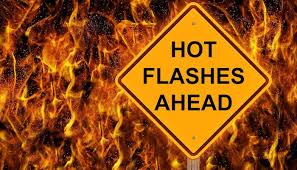Products You May Like

102 Years Of Jallianwala Bagh Massacre: April 13 marks the day of the Jallianwala Bagh Massacre, and this Tuesday is the 102nd anniversary of the incident. Jallianwala Bagh Massacre refers to the incident that took place in 1919 at Amritsar’s Jallianwala Bagh, in which British troops opened fire against thousands of people who had gathered to mark the occasion of Baisakhi. In the massacre, several hundreds were killed and numerous more were injured. The incident is seen as a major turning point in the national freedom movement of India.
Jallianwala Bagh Massacre: The events that led up to it
After the first World War ended in 1919, Indian leaders believed that the leaders of the country would now be allowed to self-govern. To the contrary, the colonial rulers imposed the Rowlatt Act on March 10, 1919, as per which the government could imprison or confine any person who was associated with any seditious activity without any trial. The passing of this Act led to widespread protests across the country, with Mahatma Gandhi initiating a Satyagraha to oppose the Act.
Related News
Soon after, the British authorities banned Gandhi from entering Punjab, threatening to arrest him if he disobeyed. However, on the other hand, the British authorities arrested on April 9, 1919, Dr Saifuddin Kitchlew and Dr Satyapal, who were two prominent leaders and had organised a peaceful protest against the Act in Amritsar.
On the next day, infuriated groups of people went to the Deputy Commissioner’s residence where they demanded that the two leaders be freed. However, here, they were fired upon, and several people died. Post this, the Indian protestors began to retaliate with lathis and stones, attacking any Europeans they saw.
Jallianwala Bagh shootout: What had happened
The British authorities in Punjab were trying to suppress all opposition against this Act. Amid this, Brigadier-General Dyer issued orders prohibiting unlawful assembly of people. On April 13, 1919, however, people gathered at the Jallianwala Bagh to celebrate the festival of Baisakhi, but the British authorities saw this as a political gathering. At the Jallianwala Bagh, the gathered people were to discuss two resolutions – one that would condemn the firing that took place on April 10, and the other that would request authorities to free the imprisoned leaders.
However, when General Dyer heard of the assembly of people, he headed to the location with his troops and ordered them to open fire. As per records, the gathered people were not given any warning.
The Jallianwala Bagh only has one exit, and General Dyer ordered his troops to block it, effectively trapping all the people, including women and children, at the Bagh itself. A total of 1,650 rounds were fired over 10 to 15 minutes, and the firing ended when the troops ran out of ammunition. While the British authorities placed the number of people who died during the massacre as 291, a report by Madan Mohan Malviya, and numerous others, put this figure to be over 500.
The troops retreated from the location as soon as the firing ended, leaving the dead and the wounded untended, something that General Dyer also admitted, unapologetically, in his interrogation by the Hunter Commission. General Dyer’s action was praised by Punjab Lieutenant Governor Sir Michael O’ Dwyer.
Jallianwala Bagh Massacre: The aftermath
As news about the massacre spread across the country, people across the country became outraged, and Nobel Laureate Rabindranath Tagore renounced his knighthood. Soon after, Mahatma Gandhi also launched a large-scale satyagraha, the non-cooperation movement, which made him prominent in the freedom struggle.
While Sir Winston Churchill, who was then Secretary of War, condemned General Dyer’s action in the House of Commons in 1920, Dyer was praised by the House of Lords, which gave him a sword which had the motto ‘Saviour of the Punjab’. Since Dyer was told to resign from the military after the Hunter Commission censured his actions, a large number of sympathisers of Dyer raised a huge fund and presented it to him.
Meanwhile, the Jallianwala Bagh became a key point in the history of India’s struggle for independence and it is now an important monument in the country. The monument still contains the holes that the bullets had made during the open fire, and they are marked at the monument to highlight the severity of the situation.
Get live Stock Prices from BSE, NSE, US Market and latest NAV, portfolio of Mutual Funds, Check out latest IPO News, Best Performing IPOs, calculate your tax by Income Tax Calculator, know market’s Top Gainers, Top Losers & Best Equity Funds. Like us on Facebook and follow us on Twitter.
Financial Express is now on Telegram. Click here to join our channel and stay updated with the latest Biz news and updates.
